Swansea Cricket and Football Club was one of the eleven original rugby clubs that were present at the founding of the Welsh Rugby Union in March 1881. The club has a rich history, with its rugby team having beaten Australia in 1908, South Africa in 1912 and New Zealand in 1935. As well as rugby, the town was a hotbed for all sports, notably cricket and football. Officially some 24 members of the Swansea Cricket and Football Club gave their lives during the Great War of 1914-1918. These men were commemorated on the original plaque which was located in St. Helen’s ground, but after the old grandstand was demolished in 2005, the plaque was moved to the clubhouse for safekeeping. As a result, a new memorial plaque was commissioned and erected in St. Helen’s ground. Whilst researching this war memorial, I uncovered several former players from Swansea who for some reason are omitted from this war memorial, so I have taken the liberty of adding their details below and they are all noted as such.
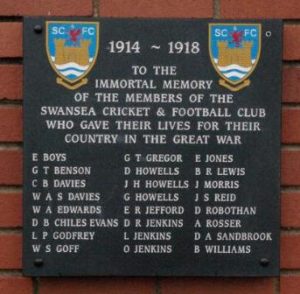
The Great War, 1914-1918
Graham Trevor Athelstan Benson, 2nd Corporal, 169, South African Railway Operating Company. George was born in 1881, the son of Thomas Benson and Emily Harriet Benson (nee Morris), of 2, Duke Street, Swansea. He was educated at Swansea Grammar School and became a renowned athlete and rugby player, playing rugby on the wing for Neath, Mountain Ash, Maesteg and Swansea. He was also a gifted swimmer who played water polo. Graham left Swansea in about 1904 to work in German East Africa. Following the outbreak of war he enlisted into the South African army, but due to his age was unable to join the infantry, so was posted to the South African Railway Operating Company. He returned to Britain and visited Swansea whilst on leave prior to being posted to the Western Front with the South Africans in the summer of 1916. Graham survived the South Africans terrible ordeal at Delville Wood, on the Somme, that summer and on the following year moved with them to the Ypres Salient. He was killed by a bomb dropped from a German aircraft whilst at work near Vlamertinghe on 26 September 1917. The 36-year-old was buried in Vlamertinghe New Military Cemetery, Belgium.
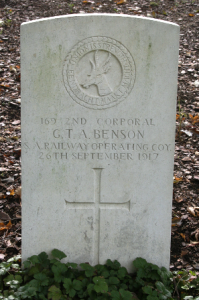
Ebenezer Morgan Jacob Boys, Private, 37604, Welsh Regiment. Ebenezer, known simply as Eben, was born in Swansea in 1886, the son of George Robert Boys and Bella Rose Boys (nee Jones). He was raised by his uncle Ebenezer Morgan jones at 46, St. George’s Terrace, Swansea, as his father, a travelling Commercial Clerk from Denmark, was forced to work away for most of the coming years. Eben became a clerk for the Atlantic Fuel Company in Swansea and was a well-known sportsman in the town prior to emigrating to Argentina in May 1912. Eben returned to Britain following the outbreak of war and enlisted into the Welsh Regiment in Pembroke. Eben was drafted to the Mediterranean in the summer of 1915, landing at Gallipoli on 10 October to join the 8th Battalion, Welsh Regiment. The battalion was the Pioneer Battalion to the 13th (Western) Division and had suffered heavy casualties since its arrival on the peninsula. Ebenezer was wounded soon afterwards but remained with the battalion. The Division was evacuated to Egypt from Gallipoli on 8 January 1916, concentrating at Port Said, where it held forward posts in the Suez Canal defences. On 12 February 1916 the Division began to move to Mesopotamia, to strengthen the force being assembled for the relief of the besieged garrison at Kut al Amara. By 27 March, the Division had assembled near Sheikh Saad and came under orders of the Tigris Corps, and then took part in the attempts to relieve Kut. However, after these efforts failed and Kut fell, the British force in the theatre was built up and reorganised. The Division then fought at the Battle of Kut al Amara, then at the capture of the Hai Salient and the capture of Dahra Bend. They took part in the passage of the Diyala, in the pursuit of the enemy towards Baghdad, and part of the Division were the first British troops to enter Baghdad after it fell on 11 March 1917. Eben became ill whilst serving in the harsh climate in Mesopotamia, contracting dysentery, and was invalided back to Britain. Upon his recovery he was drafted to France, joining the 19th Battalion, Welsh Regiment, which was the Pioneer Battalion to the 38th (Welsh) Division, but was wounded in March 1918 and hospitalised. Upon recovering, he was drafted back to France and posted to the 2nd Battalion, Welsh Regiment, which was attached to 3 Brigade, 1st Division. Eben was wounded during the great advance to victory at the beginning of November 1918 and was admitted to the 32nd Ambulance Train, which was taking wounded troops to Le Havre. Even died of his wounds aboard the train on 6 November 1918. The 33-year-old was buried in Ste. Marie Cemetery, Le Havre, France. A brother, Bertram Oliver Boys, died at sea in 1946 after having survived serving in the Merchant Navy throughout the Second World War.

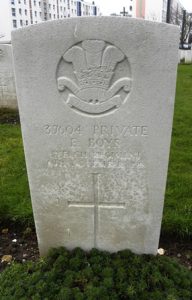
David Brynmor Chiles-Evans, DSO, Lieutenant-Colonel, Royal Army Medical Corps. David was born in Cirencester, Gloucestershire in 1877, the son of Reverend David Evans and Elizabeth Ann Evans (nee Chiles). His father was a Congregational Minister and by 1881 had moved his young family back to his native Wales, settling at Pembrey. David was initially educated at Aberystwyth University but left there to volunteer to serve with the Welsh Hospital in South Africa during the Anglo-Boer War of 1899-1902. He embarked with the staff of the Welsh Ambulance aboard the SS Canada on 14 April 1900 and disembarked in Cape Town, serving as a Dresser with the hospital throughout the campaign, gaining the Queen’s South Africa Medal with clasps: Cape Colony, Orange Free State and Transvaal. When he eventually returned to Wales, he completed his studies, qualifying as a doctor and had become a well-known rugby player, playing for Swansea RFC and for London Welsh. He gained his first position in the Swansea Workhouse, and alongside his work continued to serve with the army volunteers over the coming years, initially as a Lieutenant with the Gloucester and Somerset Bearer Company, Royal Army Medical Corps, then in November 1908, following the formation of the Territorial Army, David was appointed to the 3rd Welsh Field Ambulance, Royal Army Medical Corps, which was based at Swansea. In 1910 he set up in practice in partnership with Doctor E. Brice in the Landore area of Swansea, both men purchasing the practice of the retiring Doctor E.B. Evans. In 1914 David was mobilised with the 3rd Welsh Field Ambulance, but swiftly volunteered to serve overseas, being promoted to Captain and appointed as a Medical Officer with the 1st Battalion, West Yorkshire Regiment. The battalion embarked for France on 10 September 1914 attached to 18 Brigade, 6th Division, then entrained for the Aisne to join the rest of the BEF which was under intense pressure. On 1 October, after weeks of heavy fighting, the division was relieved and began to move north with the BEF to Flanders, taking over positions near Bois Grenier by 17 October. David was wounded here on 20 October during a German assault on the division’s positions. He soon returned to duty, and was wounded again later that year, at Hooge on 9 August 1915. When he returned to duty David was posted to the 18th Field Ambulance, which was in the same 6th Division, and saw further action during the Battle of Loos in September. David was the medical Officer that examined the detainee Private Harry Farr of the 1st West York’s early in 1916, after he had twice been treated for being ‘nervy’. Harry was subsequently executed for Cowardice, a sentence which has only in recent years been rescinded, and a full pardon given him. David was awarded the Distinguished Service Order for his work at Loos in the King’s Birthday Honours List of 31 May 1916 and returned home to receive the award during an Investiture at Buckingham Palace. In the summer of 1916, the 6th Division moved south to the Somme. David was wounded here, at Ginchy, on 17 September 1916, and enjoyed a brief spell of leave at home to recuperate before returning to duty again and on 9 March 1917 he was promoted from Captain to Lieutenant-Colonel and given command of the 18th Field Ambulance. The division moved to the Arras sector soon afterwards and saw heavy fighting around Hill 70. David was badly wounded by shell fragments whilst at work with his Field Ambulance on 23 April 1917, but bravely remained on duty until being hit again half an hour later and died soon afterwards that same day. The body of the 40-year-old was buried in Bethune Town Cemetery, France. David is also commemorated on war memorials at Burry Port, Swansea and Cardiff University. He had also been mentioned in despatches three times during the war.
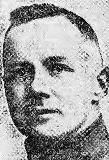
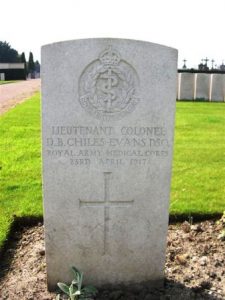
Charles Bernard Davies, Lieutenant, Royal Dublin Fusiliers. Charles was born on 5 June 1894, the son of David E. And Martha Davies, of The Bear Hotel, Cowbridge, Glamorgan. After his father’s death, Charles’s mother re-married, becoming Mrs Lloyd of Lynsholme, Caerphilly, Glamorgan. Charles commenced his education at Cowbridge Grammar School and was educated at Llandovery between 1908 and 1913. He is remembered at Llandovery as being an All-round sportsman, playing both hockey and cricket for the school from 1910 to 1913. On leaving Llandovery, Charles played cricket for St Fagan’s, Swansea and Cardiff and played one game for Glamorgan. He also played rugby for both Swansea RFC and Cardiff RFC, where it was recorded that he was a useful three-quarter. His last season for Cardiff RFC was the 1913/14 season. (Charles’s elder brother, Elvan Davies of Aberavon, played rugby for Wales.) It was also unofficially announced in 1914 that Charles had taken all B.N.C. Sprinting Records. Charles had entered Cambridge University in 1913, where he continued playing rugby. It was said that had he not volunteered for the Army in 1914, he was tipped to win a Blue. He joined the Royal Dublin Fusiliers in 1914 and was commissioned on 26 August 1915 into the 3rd Battalion, which was the Reserve Battalion. Charles was then attached to the 1st Battalion of the Regiment, which was in France preparing for the Battle of the Somme. On the night of 8 June 1916, Charles led a bombing party when it came under heavy enemy fire. The only survivor was a Private Dunne, who was himself to die from his wounds two days later. Search parties were sent out to look for Charles and his men, and it was learned that Charles had been taken prisoner after a fierce hand to hand battle with the Germans. He died in captivity on 9 June 1916, aged just 22. Charles was initially buried by the Germans in Miraumont German Cemetery, but his grave was later destroyed by shellfire. Subsequently, he was commemorated on the German Cemetery Memorial at Queen’s Cemetery, Bucquoy, France. Charles is not commemorated on the Swansea Cricket and Football Club war memorial.
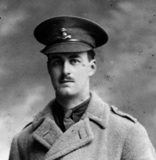
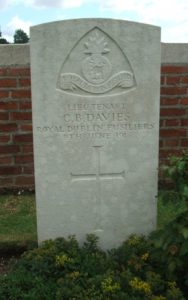
William Arthur Shenstone Davies, Lance Corporal, 244953, The Loyal North Lancashire Regiment. William was born in 1894, the son of James Alfred Davies and Harriet Jane Davies (nee Shenstone), of 112, Gorse Lane, Swansea. His father was the assistant manager of the Hafod Copper Works and the family later resided at De-La-Beche Road, Sketty. William followed in his father’s footsteps in playing cricket for Swansea and also joined him working at the Hafod Copper Works, gaining a position as a Clerk. Following the outbreak of war William enlisted into the newly formed 14th Battalion, Welsh Regiment, the Swansea Battalion, gaining a commission as Second Lieutenant in the battalion. The battalion had been raised at St. Helen’s by the Mayor and Corporation of Swansea with the Swansea Football and Cricket Club, before moving to Rhyl to join 129 Brigade, 43rd (Welsh) Division. The division trained in North Wales over the coming months, suffering from lack of arms and uniforms, then on 29 April 1915 became renumbered to the 38th (Welsh) Division. The division moved to Winchester in August 1915 to complete its training, before beginning to embark for France on 2 December, moving to the Nursery Sector at Fromelles for trench initiation and training. William suffered a close call during the battalions first tour in the trenches in the Richebourg St. Vaast area on 20 December, when a shell fragment exploded and shrapnel ripped off his trench cap, in an explosion which wounded 8 men, one of which died of shock. William was evacuated away suffering from shock and loss of eyesight and was later discharged from the army as medically unfit. He then went to work in Oldham, where his parents originally came from, and against his parents’ wishes married Ruth Orr at St. James’ Church, Moss Side, Manchester on 30 May 1916. On 18 October 1916 William, now fully recovered, re-enlisted at Swansea into the 2/5th Battalion, The Loyal North Lancashire Regiment as a Private, joining the battalion at Aldershot, where it was attached to 170 Brigade, 57th (West Lancs) Division. William embarked for France at Folkestone with the battalion on 8 February 1917 and disembarked at le Havre the following day, before the entire division moved to the Fleurbaix Sector for trench initiation and training. The division then took over the Ploegsteert Wood Sector where it watched as the Allies launched their assault against Messines Ridge, just to the north, on 7 June. William had suffered several spells in hospital sick by now and was promoted to Lance Corporal. The division remained here over the coming weeks sitting out the initial assault of the Passchendaele Offensive on 31 July 1917, but by the middle of October was relieved and moved north, taking over positions near Poelcapelle. William’s battalion moved forwards from Marsouin Farm and on 25 October took up positions in the front line, ready to launch an assault upon Passchendaele Ridge. At 05.40 on 26 October 1917, in terrible conditions, the battalion launched its assault, but the men were soon held up by a ferocious artillery and machine-gun barrage. William was killed in action during the assault that morning. The 23-year-old has no known grave and is commemorated on the Tyne Cot Memorial, Belgium.

William Armine Edwards, Lieutenant, Welsh Regiment. William was born on 3 May 1892, the son of William Henry Edwards and Margaret Hannah Edwards (nee Williams), of The Hill, Sketty. He was educated at Harrow and Cambridge, and after returning home to take up a position at the Duffryn Works became a well-known cricketer, playing for Swansea and then being called up to play for Glamorgan County in June 1913. William married his childhood sweetheart, Aerona Sails, at St. Peter’s Church, Oystermouth on 23 November 1914. William had by now enlisted into the Glamorgan Yeomanry and was serving as a Lance Corporal. The Glamorgan Yeomanry had by then moved to Norfolk, where it had been sent on home defence duties alongside the Pembroke Yeomanry. During March 1916 the 1/1st Pembroke Yeomanry and the 1/1st Glamorgan Yeomanry moved to Egypt, where they merged with the Welsh Border Mounted Brigade and formed the 4th Dismounted Brigade. On 2 February 1917 the two regiments merged to form the 24th Battalion, Welsh Regiment, and became attached to 231 Brigade, 74th (Yeomanry) Division. The Division assembled in Egypt as part of the EEF, before crossing the Suez Canal into the Sinai, and saw its first major action during the Second Battle of Gaza. The battle was a failure, and the EEF was re-organised under a new commander, Sir Edmund Allenby, before launching the Third Battle of Gaza on the night of 31 October 1917. This assault was launched along a winder front, running from Gaza to Beersheba, and this time the EEF prevailed, opening the door to Jerusalem. 231 Brigade began its assault on Beersheba at 10.30, attacking the town from the south western side, along the Wadi es Saba. The 1070 Works were captured with little fighting, with 24th Royal Welsh Fusiliers and 25th RWF leading the way. The 24th Welsh mopped up behind the leading battalions as they moved forwards. The country was open, stony and desolate, with little cover except in the wadis, and the 24th Welsh saw considerable fighting during its advance. Within just a few hours, the division had captured its objectives, so the 24th Welsh advanced for 2,000 yards in front of the two RWF battalions and dug into a new defensive position around Wadi es Saba where it remained for the night. In the wider scheme of things, XX Corps had successfully captured all of its objectives, leaving the town of Beersheba itself to the Desert Mounted Corps, who captured it later that day after a famous charge by the Australian Light Horse. The surviving Turkish forces withdrew. William had been mortally wounded during the assault on Beersheba, and died a few hours later, on 1 November 1917. The 25-year-old is buried alongside several of his men in Beersheba War Cemetery.
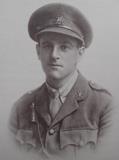
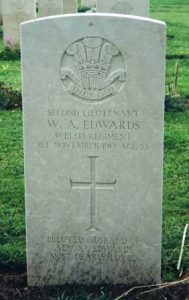
David Howell Evans, Sergeant, 17859, Welsh Regiment. David was born in 1890, the son of William Evans and Margaret Evans (nee Thomas), of 1, Armine Road, Fforest Fach, Swansea. He worked as a coal miner prior to the war and was a highly regarded member of the Swansea RFC forward pack, playing regularly for the club. As soon as war erupted, David enlisted at Swansea into the newly formed 14th Battalion, Welsh Regiment, the Swansea Battalion. The battalion had been raised at St. Helen’s by the Mayor and Corporation of Swansea with the Swansea Football and Cricket Club, before moving to Rhyl to join 129 Brigade, 43rd (Welsh) Division. The division trained in North Wales over the coming months, suffering from lack of arms and uniforms, then on 29 April 1915 became renumbered to the 38th (Welsh) Division. The division moved to Winchester in August 1915 to complete its training, before beginning to embark for France on 2 December, moving to the Nursery Sector at Fromelles for trench initiation and training. During June 1916 the Division marched south to the Somme, and on 7 July 1916 attacked Mametz Wood. The initial attack failed, and it was three days later, on 10 July, that a fresh attack was mounted. After two days of heavy hand to hand fighting within the wood, the Germans withdrew, and the battered Welshmen moved via Hébuterne to Boesinghe, on the Yser Canal, where it remained until launching its attack on Pilckem Ridge on 31 July 1917. The 15th Welsh remained in the line, and also took part in the Battle of Langemarck, before the entire Division was moved to positions near Armentieres over the winter. After the Germans launched their offensive on the Somme on 21 March 1918, the Division was moved back to the Somme, and took up positions north of Albert, around Aveluy Wood. A number of small-scale attacks followed, intended to push the Germans off Bouzincourt Ridge and gain control of the high ground. On 10 May 1918 the 15th Welsh, also of 114 Brigade, launched an assault on Aveluy Wood, supported by the 14th Welsh. Due to a mix up with range calculations, the supporting artillery barrage fell short, causing horrendous casualties to the attacking men. David was initially posted as missing during the failed assault that day and some months later was eventually confirmed as having been killed. The 27-year-old is buried in Martinsart British Cemetery, France. David is not commemorated on the Swansea Cricket & Football Club war memorial.
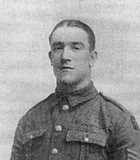
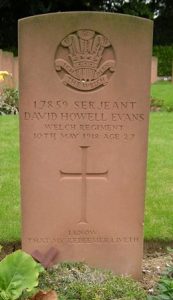
Leonard Powell Godfrey, Captain, Welsh Regiment. Leonard was born in 1891, the son of Joseph Godfrey and Mary Godfrey (nee Beynon), of Glantawe, Heathfield Road, Swansea. He was educated at Shebbear College in Devon, where he excelled in cricket and football. After leaving college he returned home to begin work and began playing cricket for Swansea. Leonard enlisted into the 14th Battalion, Welsh Regiment, the Swansea Battalion, soon after its formation and was commissioned as Second Lieutenant in the battalion in October 1914. The battalion had been raised at St. Helen’s by the Mayor and Corporation of Swansea with the Swansea Football and Cricket Club, before moving to Rhyl to join 129 Brigade, 43rd (Welsh) Division. The division trained in North Wales over the coming months, suffering from lack of arms and uniforms, then on 29 April 1915 became renumbered to the 38th (Welsh) Division. The division moved to Winchester in August 1915 to complete its training, and Leonard returned home to Swansea on leave, marrying Agnes Jean Moffat, at St. Andrew’s Church, Swansea soon afterwards. After a brief honeymoon, he returned to Winchester to re-join the 14th Welsh. The 38th Division began to embark for France on 2 December, moving to the Nursery Sector at Fromelles for trench initiation and training. During June 1916 the Division marched south to the Somme, and on 7 July 1916 attacked Mametz Wood. The initial attack failed, and it was three days later, on 10 July, that a fresh attack was mounted. After two days of heavy hand to hand fighting within the wood, the Germans withdrew, and the battered Welshmen moved via Hébuterne to Boesinghe, on the Yser Canal, where it remained until launching its attack on Pilckem Ridge on 31 July 1917. The assault was launched at dawn that day, with the division being allocated three objectives: the Blue, Black and Green Lines. Leonard remained behind with a cadre of the 14th Welsh during the assault, in case of heavy casualties, but soon re-joined the battalion after the division had successfully taken its objectives. The division then held the line facing Langemarck over the coming days, whilst fighting raged around it. Leonard was wounded here during a spell in the line on 22 August and was evacuated to the nearby 46th Casualty Clearing Station near Proven, where he died of his wounds the following day, 23 August 1917. The 27-year-old was buried in Mendinghem Military Cemetery, Belgium.

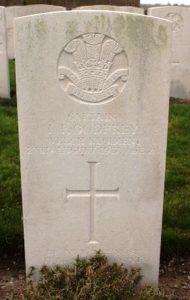
William Setten Goff, MC, Lieutenant, Royal Welsh Fusiliers. William was born on 18 June 1881, the son of James Charles Goff and Ann Goff (formerly Murch, nee Setten), of Exeter. He was educated at Hele’s School in Plymouth before gaining work as an auctioneer. William then played rugby for Exeter and then for Devon County before moving to Swansea to work for Messrs David Roberts, Auctioneers and lived with his cousin at 4, Woodland’s Terrace. He then played several seasons at forward for Swansea RFC, before moving with his work to Cardiff, and began playing for Cardiff RFC. William enlisted into the Royal Welsh Fusiliers following the outbreak of war, gaining a commission as Second Lieutenant into the 7th Battalion, Royal Welsh Fusiliers on 16 December 1915. He then remained on home service until embarking for France on 7 March 1917 and was posted to the 16th Battalion, Royal Welsh Fusiliers, which was at Ypres attached to 113 Brigade, 38th (Welsh) Division. The division had moved to Ypres the previous year following its famous assault on Mametz Wood and had spent most of its time improving trenches along the Canal Bank at Boesinghe, in preparation for the forthcoming Passchendaele offensive. On 31 July 1917 the Division launched its famous assault on the Pilckem Ridge, capturing Iron Cross and reaching its objective of the Steenbeek, then played a supporting role in the Battle of Langemarck. William was awarded the Military Cross for his work during the assault on Pilckem Ridge. His award was gazetted on 26 September 1917, and its citation read: ‘For conspicuous gallantry and devotion to duty when acting as battalion transport officer. Advancing with the attack; he made a daring and successful reconnaissance of the route for his pack animals, and led them to their destination without casualties, although another column of pack animals had suffered severely in advancing.’ The Division was transferred to the Sailly-sur-la-Lys sector in September and remained in the area over the winter before being moved to positions north of Albert, at Bouzincourt Ridge, at the end of March 1918, relieving the battered 2nd and 47th Divisions. On the night of 21 March, the 16th RWF moved into the line, carrying special equipment in readiness to attack the German positions on Bouzincourt Ridge the following morning. At 07.30 on 22 April 1918 the battalion attacked behind a creeping artillery barrage but within minutes the Germans opened up a heavy artillery and machine-gun barrage upon the advancing men, causing terrible casualties. William was one of seven officers killed during the assault that morning. The body of the 36-year-old was later recovered from the battlefield, and he was buried in Bouzincourt Communal Cemetery Extension, France.
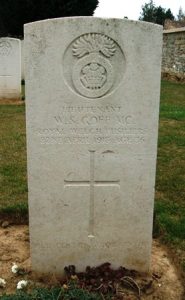
George Trevor Gregor, VD, Lieutenant-Colonel, Royal Field Artillery. George was born on 29 March 1870, the son of Joseph Gregor and Susan Gregor (nee Bartlett), of 1, Cleveland Terrace, Swansea. His father ran his own Timber Merchants in the South Dock at Swansea, and upon finishing his education at Wycliffe School, George became a senior partner in the family business. He had become a proficient cricketer whilst in school and upon his return to Swansea played cricket for the town. George was a renowned businessman and also became Chairman of the Bristol Channel Timber Importer’s Association. He was also commissioned as Second Lieutenant into the 1st Glamorgan Volunteer Battery in 1896, which became the 1st Glamorgan Battery following the formation of the Territorial Army in 1908, and by then had risen to the rank of Major. When war erupted, George left behind his life in Swansea and volunteered to serve overseas, being granted command of the 1st Welsh Howitzer Brigade, Royal Field Artillery. He embarked for the Western Front in June 1917 and took his battery to the Ypres Salient, in support of the 38th (Welsh) Division, which was holding the Canal Bank sector at Boesinghe. On 1 July 1917 George was in the battery mess tent with several of his officers, when a German shell crashed into the building, killing him and several other men outright. The 47-year-old was buried in Ferme Olivier Cemetery, Ieper, Belgium. George was the holder of the Volunteer Decoration, for his many years of service with the Territorial Army.
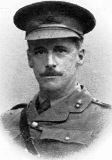
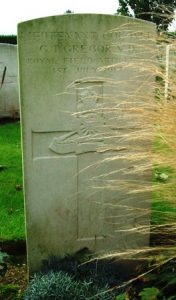
Denzil Howells, Second Lieutenant, East Lancashire Regiment. Denzil was born on 25 September 1897, the fourth of six sons of John Howells and Annie Howells of 16, Woodlands Terrace, Swansea. His father was the Chief Clerk at the Swansea Post Office, but just prior to the war had moved the family to Moulton House, Bristol Road, Weston-Super-Mare after gaining the post of Postmaster there. Denzil followed in the family tradition of playing cricket for Swansea alongside his brothers prior to the war. Denzil enlisted into the Royal Naval Volunteer Reserve on 14 June 1915 and was drafted to the Mediterranean on 5 December 1915 to join Nelson Battalion, Royal Naval Division, which was at Gallipoli. By the time Denzil arrived, the Gallipoli peninsula was in the process of being evacuated, so he joined Nelson Battalion in Egypt on 9 January 1916. The Royal Naval Division transferred from the authority of the Admiralty to the War Office on 29 April 1916 and was redesignated the 63rd (Royal Naval) Division on 19 July 1916. The Division then moved to France, arriving at Marseilles between 12 and 23 May 1916 and moved to positions on the Somme, where it took part in the Battle of the Ancre, and the resulting Operations on the Ancre. Denzil began suffering from leg ulcers in the squalid conditions of the Ancre Valley and was hospitalised at the end of October. He re-joined Nelson Battalion on 2 December and spent the winter on the Somme with the battalion. On 3 March 1917 Denzil left France to return home to train as an Officer Cadet, then on 25 September 1917 he was commissioned as Second Lieutenant into the 5th Battalion, East Lancashire Regiment. Denzil was then drafted back to France and was attached to the 1/4th Battalion, York and Lancaster Regiment, which was attached to 148 Brigade, 49th (West Riding) Division at Bray Dunes, on the Belgian Coast. The division then moved back into the Ypres Salient and took up positions on Passchendaele Ridge by 9 October, but soon after moved again to the Steenvoorde area, before moving back to Ypres again, where the division spent the rest of the winter. The division was holding the Tower Hamlets Sector at Ypres when the Germans launched their Lys Offensive on 9 April 1918, so it was relieved before being moved south to attempt to hold the line, which had been broken through, taking up positions at Neuve Eglise. The 1/4th York and Lancs counter-attacked the Germans here on the afternoon of 11 April, before establishing a new forward line, but was forced to withdraw later that evening due to the risk of being encircled. The Germans then attacked the battalion on the evening of 12 April 1918 in great force and broke through their lines. Denzil was badly wounded during the fighting which ensued and died of his wounds on the following day, 13 April 1918. The 20-year-old was buried in Locre Hospice Cemetery, Heuvelland, Belgium. He was the third of the three Howells brothers to be killed during the war.
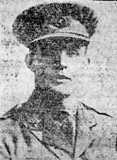
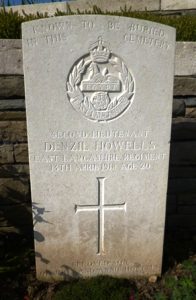
Graham Howells, Captain, Welsh Regiment. Graham was born in 1895, the third of six sons of John Howells and Annie Howells of 16, Woodlands Terrace, Swansea. His father was the Chief Clerk at the Swansea Post Office, but just prior to the war had moved the family to Moulton House, Bristol Road, Weston-Super-Mare after gaining the post of Postmaster there. Graham, like some of his brothers, played cricket for Swansea prior to the war. He enlisted at Swansea into the newly formed 14th Battalion, Welsh Regiment, the Swansea Battalion, in August 1914, and was commissioned as Second Lieutenant into the battalion, before being almost immediately promoted to Captain. The battalion had been raised at St. Helen’s by the Mayor and Corporation of Swansea with the Swansea Football and Cricket Club, before moving to Rhyl to join 129 Brigade, 43rd (Welsh) Division. The division trained in North Wales over the coming months, suffering from lack of arms and uniforms, then on 29 April 1915 became renumbered to the 38th (Welsh) Division. The division moved to Winchester in August 1915 to complete its training, before beginning to embark for France on 2 December, moving to the Nursery Sector at Fromelles for trench initiation and training. Graham was wounded whilst the 14th Welsh were holding the Moated Grange Sector of the line on 1 May and was evacuated to the nearby hospital at Merville, where he died of his wounds on the following day, 2 March 1916. The 21-year-old was buried in Merville Communal Cemetery, France. He was the first of the three Howells brothers to be killed during the war.
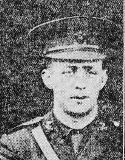
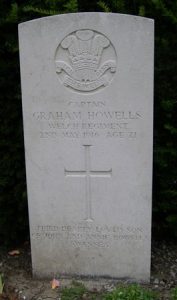
John Hubert Howells, Second Lieutenant, Royal Field Artillery. John was born in 1893, the second of six sons of John Howells and Annie Howells of 16, Woodlands Terrace, Swansea. His father was the Chief Clerk at the Swansea Post Office, but just prior to the war had moved the family to Moulton House, Bristol Road, Weston-Super-Mare after gaining the post of Postmaster there. John was educated at Swansea Grammar School, where he was a notable athlete, and upon leaving school worked as an architect and surveyor, whilst also playing cricket for Swansea. He enlisted into the Royal Field Artillery soon after the outbreak of war, rising to the rank of Sergeant whilst on home service. John was then commissioned as Second Lieutenant into the Royal Field Artillery on 9 June 1917 and was drafted to France on 26 June, being posted to the 15th Brigade, Royal Horse Artillery, which was in the Arras Sector and was operating at Bois Des Bouefs as part of the 3rd Echelon Artillery Group. In August the brigade moved north to the Ypres Salient and was in support of the 29th Division as it took parts in assaults against Langemarck and positions south of the Staden Railway. John was killed whilst operating a gun of the 15th Brigade in support of another attack by the 29th Division across the Steenbeek on 9 October 1917. The 24-year-old was buried in Canada Farm Cemetery, Belgium.
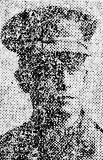
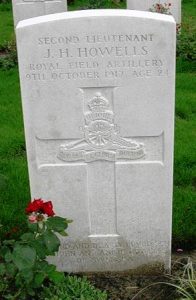
Edwin Robert Jefford, Private, M2/032772, Royal Army Service Corps. Edwin was born in 1889, the son of William Robert Jefford and Annie Jefford (nee Beynon), of 67, Walter Road, Swansea. He worked with his father as a baker prior to the war and was a well-known cricketer, playing as a bowler for Plevna and Swansea. He enlisted into the Army Service Corps at Swansea in December 1914 and initially served as a driver with the Red Cross, embarking for France on 7 February 1915. Edwin continued to serve as a driver with the Red Cross until coming home on leave in October 1917 as upon his return to France he was posted to the 611th Mechanical Transport Company, Royal Army Service Corps. The company was attached to the 184th Siege Battery, Royal Garrison Artillery, which was attached to the 3rd Army in the Arras Sector. At dawn on 21 March 1918, following a ferocious artillery bombardment, the Germans attacked along a section of the line running south from Croisilles to La Fère. The bombardment was followed up by an assault by highly trained stormtroopers, who broke through the Allied lines in several places and began driving towards such vital towns as Arras and Amiens, intending to break the Allied rail network. The 184th Siege Battery was rushed forward from Arras to begin pouring harassing fire down upon the advancing Germans, but themselves came under German counter-battery fire. Edwin was severely wounded during the ensuing fighting, on 28 March and was evacuated to the 57th Casualty Clearing Station at Aubigny, where he died of his wounds on the following day, 29 March 1918. The 29-year-old was buried in Aubigny Communal Cemetery Extension, France.
David Roy Jenkins, Captain, Royal Flying Corps. David was born on 24 September 1888, the son of Jacob Jenkins and Margaret Jenkins (nee Williams), of 140, Port Gate, Bridgend. He entered Christ College, Brecon in 1901 and proved to be a promising sportsman, with a gift for acting during some of the school stage performances. David left Brecon in 1903 to follow his older brother, Charles Fraser Jenkins, to Clifton College, Bristol. Upon leaving Clifton in 1906 he joined the family business, Messrs Charles Jenkins & Sons, Lime, Brick & Timber Merchants, but later set up his own brick business, David remained a fine sportsman after finishing his education, becoming Captain of the Bridgend Hockey Club and also played cricket for Swansea and Glamorgan. He was commissioned as Second Lieutenant into the 2nd Welsh Brigade, Royal Field Artillery (Territorial Army) in 1908 and in January 1911 was promoted Lieutenant. He volunteered for active service following the outbreak of war and was promoted Captain on 15 November 1914. David embarked for France to join the BEF in November 1915, then in 1916 he was transferred to Egypt. In October 1916 he volunteered to join the Royal Flying Corps, so was sent back to England for flying training at Netheravon, Salisbury Plain. On 21 January 1917 David took off from Netheravon, flying a Maurice Farman Shorthorn, Serial A7002. Whilst carrying out a series of manoeuvres, his aircraft sideslipped and nose-dived into the ground, killing David upon impact. The remains of the 28-year-old were conveyed home and he was buried with full military honours in St. Mary’s Churchyard, Norton.
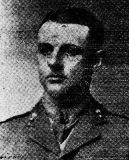
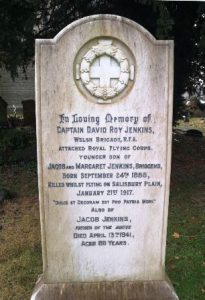
Owen Jenkins, Lance Corporal, 35538, Machine Gun Corps. Owen was born at Llangennech, the son of John and Mary Jenkins. The family later moved to Cwyn-yr-Awel, Gowerton and Owen was educated at Gowerton School. Owen gained his BA at Aberystwyth after graduating from Gowerton School. Owen had played rugby for Swansea and had played against the touring All Blacks side during their last visit to Wales prior to the war. He then took up a post as school master at Abertillery, playing rugby for the valley town. He enlisted at Abertillery on 10 December 1915 into the Royal Welsh Fusiliers and was posted to Kinmel Park for training. On 31 July 1916 Owen sailed to France, and was posted to the 15th Company, Machine Gun Corps, which was attached to the 5th Division. The Division was on the Somme in the summer of 1916, and it was here, during the Battle of Guillemont, that Owen was killed on 5 September 1916, aged 30. He was originally buried on the battlefield, but after the war his grave was exhumed and he was re-interred in Delville Wood Cemetery, Longueval, France, in Grave XXIV. K. 2. His brothers Oswald and Gwyn were also educated at Aberystwyth, and were commissioned as officers during the war, Gwyn being awarded the Military Cross.

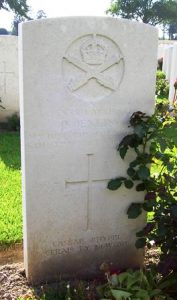
Walter Lewis Jenkins, Third Engineer, Mercantile Marine. Walter, known as Lewis, was born in 1882, the son of Walter Jenkins and Mary Jenkins (nee Evans), of 48, Peniel Green, Neath Road, Llansamlet. He resided at 159, New Road, Skewen prior to the war and married Elizabeth Anne James at Aberystwyth on 25 August 1914. Lewis had played rugby at centre for Swansea as a young man but following the outbreak of war left the town to attempt to enlist into the Royal Field Artillery. He failed to enlist for some reason, and instead enlisted into the Mercantile Marine as an engineer. Walter was then given the rating of Third Engineer and was posted aboard the Swansea registered steamer, SS Tangistan. The ship arrived back in Swansea from Benisaf, North Africa and Lewis was among a number of Swansea men who were posted aboard her, for a trip to Middlesborough. At about half past midnight on 9 March 1915, Tangistan, steaming off Flamborough Head, was hit by a torpedo which had been fired from the German submarine U-12. Before the crew had a chance to launch her lifeboats, Tangistan went down with the loss of all bar one of her crew of 38 men. Lewis was 32 years old when he drowned aboard Tangistan that morning. He has no known grave and is commemorated on the Tower Hill Memorial, London.
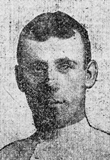
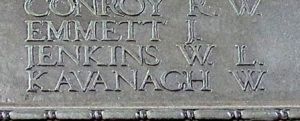
Emrys Jones, Sergeant, 1829, Devonshire Regiment. Emrys was born on 10 September 1892, the son of Thomas and Mary Jones, of Preswylfa, Gorseinon. He was educated at Gorseinon, Gowerton and at the University of Exeter before taking up a post at Assistant Master at St. Sidwell’s School, Exeter, and was a renowned rugby player, having played for Gorseinon and becoming Captain of the Exeter College XV and playing for Exeter and had also appeared in the Devon County side. Emrys enlisted into the 1st/4th Battalion, Devonshire Regiment in August 1914 and embarked for India with the battalion on 4 October 1914. From India the battalion was despatched in May 1915 to Mesopotamia attached to the 37th Indian Brigade, 14th Indian Division. Emrys was killed in action in Mesopotamia (modern Iraq) on 22 November 1915, aged 23. His Commanding Officer wrote: ‘The regiment has lost a most popular and most efficient NCO. The men have lost a great comrade. I have personally lost a very dear friend, and, believe me, the world has lost a man. He fought as he had lived – warring against all evils, clearly and fairly. He died as he most wished to meet death – face turned toward the foe and hand upraised in the cause of honour and freedom…’ He has no known grave and is commemorated on the sadly now derelict and vandalised Basra Memorial, Iraq. His brother, Gomer, also fell.
William Brinley Jordan, Private, 266586, Welsh Regiment. William, known as Bryn, was born in 1889, the son of Thomas Jordan and Ellen Jordan (nee McCarthy), of 160, St. Helen’s Avenue, Swansea. He worked as a mason after leaving school and was a well-known athlete in the town, both as a swimmer and as a rugby player at centre for Danygraig and for Swansea. Bryn married Florence May Boyles at St. James’ Church on 10 September 1910 and the couple resided firstly at 19, Rhydding’s Park Road, and then at 157, St. Helen’s Avenue, Swansea, where their two daughters were born. Bryn then found work at the Swansea Swimming Baths, but left there to enlist into the 6th Battalion, Welsh Regiment soon after the outbreak of war. Bryn joined the 2/6th Battalion, Welsh Regiment at Bedford, then in the summer of 1916 was drafted to France to join the 9th Battalion, Welsh Regiment, which was attached to 58 Brigade, 19th (Western) Division. The division was on the Somme when Bryn arrived and had taken part in a costly assault against Contalmaison in broad daylight. The division was then relieved and moved back behind the lines to rebuild, in bivouacs at Baisieux Wood whilst heavy fighting continued around Ovillers and Trônes Wood. During the last few days of September and the first week in October, the British made notable advances to the north of Thiepval and towards Bapaume, capturing the villages of Le Sars and Eaucourt L’Abbaye. Winter then fell upon the Somme, yet the fighting raged on, and British attention turned towards the Ancre valley. The 19th Division, which had moved to the Bailleul area to refit, was brought back south at the beginning of October, and took part in the final operations which ended with the capture of Beaumont Hamel. On 26 October the 9th Welsh relieved the 9th Loyal’s in the Stuff Redoubt trenches and endured a very trying period in the line. The Division wintered on the Somme and in February followed the German withdrawal to the Hindenburg Line. During the middle of March 1917, the Division was relieved from the line and began to move north, taking over positions in the Ypres Salient, and on 7 June took part in the assault on Messines Ridge, which was famously preceded by the blowing of a series of 19 huge underground mines. The 19th Division saw heavy fighting during the battle, then enjoyed a short spell in reserve. On 30 July the 9th Welsh moved back into the front line on the Kemmel Defences, in front of Oostaverne, to begin a routine spell in the trenches, whilst to the north the Passchendaele offensive opened. Bryn was killed by a shell which crashed into the positions two days later, on 1 August 1917. The 28-year-old has no known grave and is commemorated on the Ypres (Menin Gate) Memorial, Belgium. Bryn is not commemorated on the Swansea Cricket and Football Club war memorial.
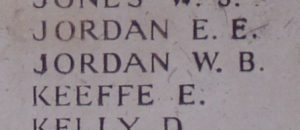
Brinley Richard Lewis, Major, Royal Field Artillery. Brinley was born on 4 January 1891, the son of David Lewis and Margaret Lewis (nee Davies), of Tanyrallt, Pontardawe. He was educated at Swansea Grammar School and at Cambridge University, where he gained three Blues. He played club rugby for London Welsh, Swansea and Newport and gained the first of his two caps against Ireland in 1912. He had joined the Glamorgan Yeomanry in October 1914 and was commissioned into the Royal Field Artillery early in 1915, joining B Battery, 122nd Brigade, Royal Field Artillery, which was attached to the 38th (Welsh) Division, and landed in France with the battery on 25 December 1915. He served with the division during its period of trench initiation in Flanders, and then during its assault on Mametz Wood in July 1916, and moved with the division to positions along the canal bank north of Ypres, where he was promoted to Major. Brinley became the tenth former Welsh international rugby player to be killed during the war, when he was killed on 2 April 1917, aged 26. He is buried in plot 3, row C, grave 1 in Ferme Olivier Cemetery, Ieper, Belgium.
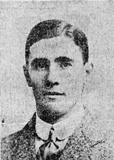
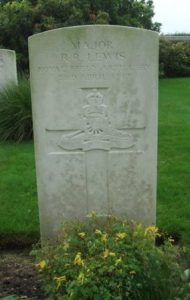
Edward Thomas Mitchell, Sergeant, 58214, Royal Field Artillery. Edward was born in 1891, the son of Edward Lewis Mitchell and Jane Ann Mitchell (nee White), of Middlesbrough. He had played professional football for Reading and Swansea prior to the war. Edward was an army reservist and was mobilised at the outbreak of war, enlisting at Scarborough into the Royal Field Artillery, and was posted to the 117th Battery, 26th Brigade, Royal Field Artillery. He landed in France on 16 August 1914 and would have taken part in the retreat from Mons. Edward returned home on leave in July 1915, and married Gladys Winifred Jones, the daughter of Evan and Frances Jones, of The Farmers Arms, Llandeilo on 22 July 1915, reportedly whilst still in his mud-splattered uniform. Edward and Gladys honeymooned in Swansea, where he visited some old friends. He re-joined his battery in France, in the Loos sector soon afterwards. Edward was wounded at Loos some months later and died of his wounds at the 33rd Casualty Clearing Station, Bethune on 6 January 1916. The 24-year-old is buried in Bethune Town Cemetery, France. Edward is not commemorated on the Swansea Cricket and Football Club war memorial.
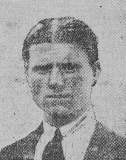
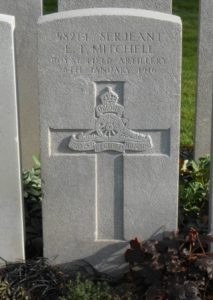
James Morris, Lieutenant, Welsh Regiment. James, known as Jim, was born in 1892, the son of David John Morris and Anne Morris (nee Jones), of Sea View, Birchgrove, Swansea. He was a well-known athlete in the town and played at centre for the Swansea Rugby team. James enlisted into the 3/1st Battalion, Glamorgan Yeomanry soon after the outbreak of war. The battalion formed as a reserve battalion early in 1915 and in the summer became attached to a reserve cavalry regiment at the Curragh. James was commissioned into the 13th (Reserve) Battalion, West Yorkshire Regiment on 16 November 1915, before transferring back as a Second Lieutenant into the Glamorgan Yeomanry on 16 April 1916. The 1/1st Glamorgan Yeomanry had recently embarked for Egypt together with the Pembroke Yeomanry as part of the South Wales Mounted Brigade but was dismounted and reverted to an infantry battalion as soon as it arrived, and the Brigade became entitled the 4th Dismounted Brigade. The new Brigade took up positions on the Suez Canal Defences, whilst also patrolling to counter the threat of local Senussi Tribesmen. On 2 February 1917 the Glamorgan Ye4omanry merged with the Pembroke Yeomanry to form the 24th Battalion, Welsh Regiment, and became attached to 231 Brigade, 74th (Yeomanry) Division. The Division assembled in Egypt as part of the EEF, before crossing the Suez Canal into the Sinai, and saw its first major action during the Second Battle of Gaza. The battle was a failure, and the EEF was re-organised under a new commander, Sir Edmund Allenby, before launching the Third Battle of Gaza on the night of 31 October 1917. This assault was launched along a winder front, running from Gaza to Beersheba, and this time the EEF prevailed, opening the door to Jerusalem. Following the surrender of Jerusalem to Allenby’s forces on 9 December, the EEF continued to advance northwards, but became hit by a series of Turkish counterattacks. On the night of 26-27 December, the Turks launched attacks against the 60th and 53rd Divisions, whilst the 24th Welsh launched an assault on Hill 1910, north of Beit Duqqu. After fierce hand to hand fighting the Welshmen captured their objectives, but a Turkish counterattack drove them off before they had time to consolidate their gains, and the 24th Welsh had to attack again, ultimately driving the Turks away. James was killed in action during the fighting of 27 December 1917. The 25-year-old is buried in Jerusalem War Cemetery, Israel.
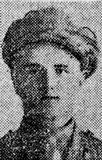
Benjamin Ethelbert Nicholls, MC and Bar, Captain, Canadian Infantry. Benjamin was born at Swansea on 15 February 1892, the son of Frederick Edmund Nicholls and Emma Nicholls (nee Southwell). His father ran a successful bakery at Waterloo Street, Swansea, but died in 1898, when Benjamin was just six years old, and his mother re-married to John Nott Viner Leeder, a Solicitor, of Underwood Villa, Mumbles, in 1899. Benjamin entered Christ College, Brecon as Benjamin Leeder, under his stepfather’s name, in 1903 and played cricket and rugby for the school. After leaving school in 1908 began working at his stepfather’s solicitor’s office in Swansea and began playing cricket for the town. In June 1911, Benjamin left Swansea for Canada to become a farmer and to join up with an elder brother, Frank Gordon Nicholls who had emigrated to Canada two years previously. Benjamin reverted to his birth surname of Nicholls upon the death of his stepfather in 1912. He enlisted into the Canadian Expeditionary Force at Toronto on 14 December 1914, and was posted to the 20th Battalion, Canadian Infantry. The battalion sailed for England on 15 May 1915 as part of the 4th Infantry brigade, 2nd Canadian Division and upon disembarkation entrained for Salisbury Plain to continue its training. Benjamin was promoted to Sergeant just prior to his battalion embarking for France on 14 September 1915. The 2nd Canadian Division moved to the Ypres Salient to join the 1st Canadian Division, taking over positions at Hill 62 and Mount Sorrel. Benjamin was shot in the shoulder on 8 January 1916 and was treated at No. 2 Canadian Clearing Station and No 8 Casualty Clearing Station before entraining for a hospital on the coast and from there was evacuated to England aboard the Hospital Ship SS St. Andrew. On 21 August 1916 he was commissioned as Second Lieutenant into the 35th Battalion, Canadian Infantry, then upon being drafted back out to France was posted back to the 20th Battalion, Canadian Infantry, being promoted to Acting Captain soon afterwards. Benjamin was Mentioned in Despatches for gallantry on 9 April 1917, during the assault on Vimy Ridge. The Canadians continued to take part in a series of battles at Arras over the coming weeks. Benjamin was awarded the Military Cross for his conspicuous gallantry on 9 August 1917 when he brought in casualties from No-Man’s Land. The citation for the award read: ‘For conspicuous gallantry and devotion to duty. A number of men were lying badly wounded in “No Man’s Land” after a raid. He went to their rescue in broad daylight and succeeded in bringing several of them in. After dark he went right up to the enemy’s wire and succeeded in bringing in men whom he had been unable to reach earlier in the day. His courage and pluck were undoubtedly the means of saving many lives.’ Just a few days later, he was awarded a second Military Cross for his work in capturing a machine gun post during the assault on Hill 70. The citation for his second award read: ‘For conspicuous gallantry and devotion to duty. During an attack on enemy trenches, he led his company with splendid dash to their objective, and when held up by enemy machine gun and bombers, although wounded himself, rallied a party and captured the position, shooting four of the enemy. He also organised and led a successful counterattack, greatly inspiring all ranks by his courageous example and untiring energy throughout the operation.’ The Canadians then moved north to Ypres in October to take part in the Second Battle of Passchendaele, the final assault on the ridge. Benjamin was then sent on a temporary posting as an instructor, before returning home on leave. He re-joined the battalion near Arras at the end of February 1918, in time to take part in the heavy fighting which followed the launching of the German Spring offensive on 21 March. After the Germans had switched their attention elsewhere, the Arras front quietened down, and routine trench warfare ensued. Benjamin was killed by a German shell whilst in the line near Mercatel on 8 May 1918. The body of the 27-year-old was carried back behind the lines by his men and he was buried in Bellacourt Military Cemetery, Riviere, France. Benjamin is not commemorated on the Swansea Cricket and Football Club war memorial.
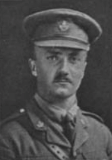
John Shute Reid, Second Lieutenant, Royal Field Artillery. John, known as Jackie, was born in 1897, the son of Dr Edgar Reid and Caroline Reid (nee Shute), of 164, St. Helen’s Road, Swansea. He was educated at Wells House, Malvern and at Sedbergh School, before gaining a place at Trinity College, Cambridge. His father was a former Swansea cricketer, whilst John excelled at golf and cricket, being a member of the Pennard Golf Club. John left his studies at Sedbergh as soon as he turned 18, turning down the opportunity to study at Cambridge to enlist into the South Wales Borderers. He gained a commission as Second Lieutenant into the 3rd Battalion, South Wales Borderers and was drafted out to the Western Front in December 1916 to join the 2nd Battalion, South Wales Borderers, which was attached to 87 Brigade, 29th Division. The Division wintered on the Somme, taking part in the advance which followed the German withdrawal to the Hindenburg Line. At the beginning of April, the entire 29th Division moved out of the Somme sector to the Arras sector, and by 9 April took over a section of the line facing Monchy-le-Preux. The Division then began to prepare for the forthcoming Battle of Arras. At dawn on 23 April 1917, the Division launched an assault on Monchy-le-Preux. The 2nd SWB captured the front-line German trench and advanced some 300 yards beyond before consolidating its gains. After further fighting in the area the division was relieved and moved further north to Ypres, initially to hold the line whilst other units had been withdrawn for specialist training, in readiness for the Third Battle of Ypres, which opened on 31 July 1917. The 29th Division went into reserve whilst the first attacks, the Battle of Pilckem Ridge, took place, then on the night of 14-15 August the 2nd SWB moved into the line facing Langemarck, ready to launch another offensive. On the following day the battalion reconnoitred the ground in front of them, and laid white tapes in No Man’s Land, to guide the attacking troops, and at dawn on 16 August 1917 the 2nd SWB launched an attack on Langemarck. The battalion successfully took its two objectives but had suffered 163 casualties. John had by now become temporarily attached to the 87th Trench Mortar Battery which was in support of the assaulting troops. He was badly wounded during the fighting that day and was evacuated to a Casualty Clearing Station near Proven, where he died of his wounds on the following day, 17 August 1917. The 20-year-old is buried in Dozinghem Military Cemetery, Belgium.

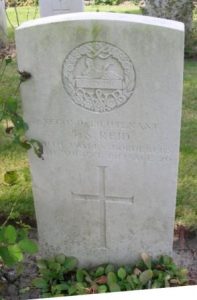
Douglas Parker Robathan, Captain, Welsh Regiment. Douglas was born on 28 January 1888, the son of George Beckett Robathan and Frances Elizabeth Robathan, of The Gove, Risca, Monmouth. He was educated at Llandaff Cathedral School and Cranbrook School Kent, before becoming a mining engineer and assistant manager at the Tarreni Colliery and played cricket for Swansea. He was commissioned into the Monmouthshire Regiment in January 1908 and transferred to the 5th Battalion, Welsh Regiment in April 1909 and by the outbreak of war had been promoted Captain. Douglas volunteered to serve overseas with the 5th Welsh and embarked with the 53rd (Welsh) Division for Gallipoli in July 1915. The division landed at Suvla Bay on 9 August 1915 and the battalions were sent into the bush towards the front line, with no maps. Douglas was killed in action during fierce fighting on the following day, 10 August 1915, aged 28. He has no known grave and is commemorated on panel 140 to 144 of the Helles Memorial, Gallipoli. One of his fellow officers wrote of his death: ‘Devoted to his duty and always to be relied on… lying on the ground he still cheered his men on – Stick it Welsh, he shouted, and kept on shouting until another bullet came along and got him in the lung. He died the best death any man could die and as game as possible.’
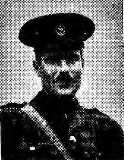
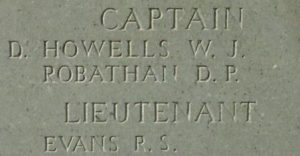
Arthur Rosser, Second Lieutenant, Welsh Regiment. Arthur was born in 1897, the son of William Rosser and Esther Rosser (nee Davies), of Penrhyn, Eaton Grove, Swansea. His father was an upholsterer and bedding manufacturer in the town. Arthur was educated at Swansea Grammar School, where he was a renowned cricketer who also played for Swansea and was a student at Swansea Technical College when war broke out. Arthur left college to enlist into the Pembroke Yeomanry on 1 January 1915, leaving the town for Norfolk to join the regiment, but on 5 March 1915 he was commissioned as Second Lieutenant into the Welsh Regiment and posted to Rhyl to join the 14th Battalion, Welsh Regiment, the Swansea Battalion. He went home on leave just afterwards and at a reception held by his parents at the White Rose Hotel in Mumbles, Arthur was presented with an officer’s sword, which had been commissioned for him. Arthur then returned to Rhyl soon afterwards to re-join the battalion. The battalion had been raised at St. Helen’s by the Mayor and Corporation of Swansea with the Swansea Football and Cricket Club, before moving to Rhyl to join 129 Brigade, 43rd (Welsh) Division. The division trained in North Wales over the coming months, suffering from lack of arms and uniforms, then on 29 April 1915 became renumbered to the 38th (Welsh) Division. The division moved to Winchester in August 1915 to complete its training, before beginning to embark for France on 2 December, moving to the Nursery Sector at Fromelles for trench initiation and training. During June 1916 the Division marched south to the Somme, and on 7 July 1916 attacked Mametz Wood. The initial attack failed, and it was three days later, on 10 July, that a fresh attack was mounted. Arthur was in charge of a bombing party and led his men across Death Valley into the wood where the fighting was terrible. His small party of men began to be surrounded, so Arthur ordered them to withdraw whilst he slowed the German counterattack, but he was never seen again. Arthur was just 19 years old when he was presumed as killed in action in Mametz Wood on 10 July 1916. He has no known grave and is commemorated on the Thiepval Memorial, France.
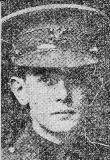
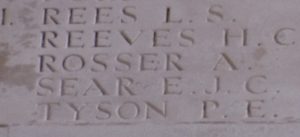
David Aubrey Sandbrook, Captain, Welsh Regiment. David was born in 1883, the son of Thomas Sandbrook and Harriet Sarah Sandbrook (nee Lotherington), of Weston Place, Swansea. The family later moved to Rhyd-y-Gors, Cockett. He was educated at Swansea Grammar School where he became a renowned cricketer and also played cricket for Swansea and Glamorgan. David left Swansea with some friends to find work and live in Rhodesia as young men but following the outbreak of war returned to Swansea to enlist. David came to stay with his mother, before being granted a commission as Second Lieutenant into the 14th Battalion, Welsh Regiment, the Swansea Battalion, on 16 October 1914. The battalion had been raised at St. Helen’s by the Mayor and Corporation of Swansea with the Swansea Football and Cricket Club, before moving to Rhyl to join 129 Brigade, 43rd (Welsh) Division. David was promoted to Captain in February 1915. The division trained in North Wales over the coming months, suffering from lack of arms and uniforms, then on 29 April 1915 became renumbered to the 38th (Welsh) Division. The division moved to Winchester in August 1915 to complete its training, before beginning to embark for France on 2 December, moving to the Nursery Sector at Fromelles for trench initiation and training. During June 1916 the Division marched south to the Somme, and on 7 July 1916 attacked Mametz Wood. The initial attack failed, and it was three days later, on 10 July, that a fresh attack was mounted. After two days of heavy hand to hand fighting within the wood, the Germans withdrew, and the battered Welshmen moved via Hébuterne to Boesinghe, on the Yser Canal, where it remained until launching its attack on Pilckem Ridge on 31 July 1917. The assault was launched at dawn that day, with the division being allocated three objectives: the Blue, Black and Green Lines. Soon after the capture of the Green Line, the final objective, David led a party of men, together with Sergeant White, to capture a house near Stray Farm, which was being used by the Germans as a dressing station. He was killed soon afterwards, during the afternoon of 31 July 1917. The 34-year-old has no known grave and is commemorated on the Ypres (Menin Gate) Memorial, Belgium. His nephew, John Charles Moxham, died in Indonesia just after the end of World War Two.
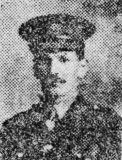
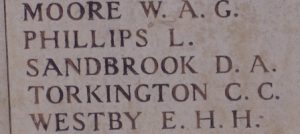
Horace Wyndham Thomas, Second Lieutenant, Rifle Brigade. Horace was born in Pentyrch on 28 July 1890, the son of Reverend Morgan Thomas and Mary Priscilla Thomas (nee Jones). He was educated at Monmouth Grammar School and at King’s College, Cambridge, where he gained his Cambridge Blue in 1912, during the Varsity match which saw Cambridge beat Oxford for the first time in seven years. Whilst at Cambridge he also sang in the college choir, was a member of the musical and dramatic societies, and played almost every sport the college had to offer. He was picked for his first Welsh cap that year, against South Africa. He also played for Blackheath, London Welsh, Swansea and the Barbarians, and gained another Welsh cap in 1913, before joining the Mercantile Marine and was based in Calcutta, where he continued to play rugby and cricket and became captain of the Calcutta Football Club. Following the outbreak of war, Horace returned home to take up a commission as Second Lieutenant into the 14th Battalion, Rifle Brigade in January 1916, before being attached to the 16th Battalion, Rifle Brigade, which was attached to 117 Brigade, 39th Division. Horace landed at Le Havre, France with the battalion on 8 March 1916 and the battalion moved to the Sailly Sur La Lys sector with the division for trench initiation and training alongside the 8th Division in the Nursery Sector. The 39th Division then took over the Annequin North sector near Bethune, where it remained until moving to the Givenchy-Festubert sector the following month. The division was eventually relieved on 6 August and began to move south to join the great offensive on the Somme, and the 16th Rifle Brigade took over billets at Bertrancourt by 28 August, prior to the division moving into the line north of the river Ancre on the night of 2 September. On the following morning, 3 September 1916, the 39th Division launched an assault along the north bank of the Ancre, but suffered terrible casualties, with the 16th Rifle Brigade alone losing over 400 officers and men killed, wounded or missing. Horace had been killed in action by shellfire during the attack that day, just after reaching the German front line. The 26-year-old has no known grave and is commemorated on the Thiepval Memorial, France. Horace is not commemorated on the Swansea Cricket and Football Club war memorial.
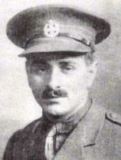
Ben Williams, Sergeant, S/1840, Rifle Brigade. Ben was born in 1890, the son of David Gilling Williams and Lavinia Williams (nee Harris), of the Fox & Hounds, High Street, Swansea. The family later resided at 23, Powell Street. He trained as a boilermaker, like his father, and worked at the King’s Dock in Swansea. Ben had played rugby at forward for Swansea and Glamorgan prior to the war and was a highly regarded player. He was among several Swansea RFC players who enlisted into the Rifle Brigade at Swansea on 4 September 1914 and was posted to Winchester to join the 11th Battalion, Rifle Brigade. The battalion moved to Blackdown after its formation, to join 59 Brigade, 20th (Light) Division, then in February 1915 moved to Witley. In April 1915 the battalion moved to Hamilton Camp, near Stonehenge, to complete its training, before embarking for France at Folkestone with the division and landing in Boulogne on 21 July 1915. The Division then moved to the Fleurbaix Sector for trench familiarisation and training. When the Battle of Loos was launched on 25 September 1915 the Division fought a diversionary attack towards Fromelles, suffering heavy casualties for no gain. Later that year the Division moved north into the Ypres Salient and fought at the Battle of Mount Sorrel alongside the Canadian Corps, during a desperate period of fighting which raged from 2 to 13 June 1916. Ben must have been a good soldier as he rose through the lower ranks to Sergeant quite quickly over the coming months and by March 1916, he had been promoted to Acting CSM in C Company. The division moved to the Vlamertinghe area after the fighting at Mount Sorrel, before taking over the line around Wieltje. On 22 July Ben was out on patrol in No Man’s Land when they came into contact with the Germans and after a brief firefight, twenty men of the 11th Rifle Brigade were overwhelmed and presumed taken prisoner by the Germans. Ben was posted as missing during the fight but was later reported to have been taken prisoner and shot by the Germans west of Messines that day, 22 July 1916. The 26-year-old has no known grave and is commemorated on the Ypres (Menin Gate) Memorial, Belgium.
